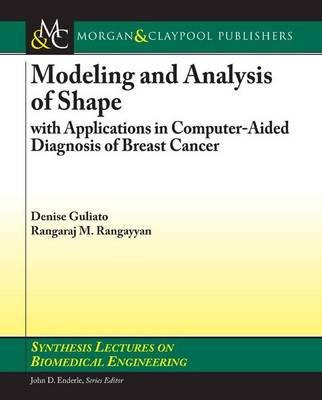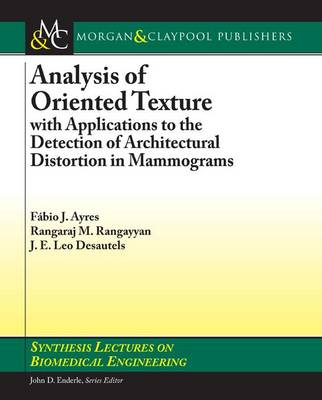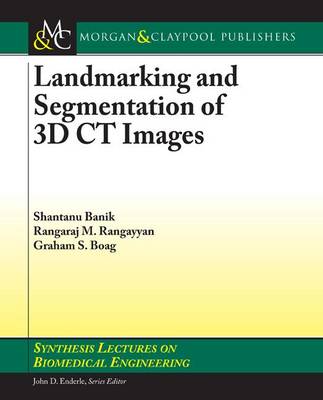Synthesis Lectures on Biomedical Engineering
4 total works
Modeling and Analysis of Shape with Applications in Computer-Aided Diagnosis of Breast Cancer
by Denise Guliato and Rangaraj Rangayyan
Published 2 February 2011
Malignant tumors due to breast cancer and masses due to benign disease appear in mammograms with different shape characteristics: the former usually have rough, spiculated, or microlobulated contours, whereas the latter commonly have smooth, round, oval, or macrolobulated contours. Features that characterize shape roughness and complexity can assist in distinguishing between malignant tumors and benign masses. In spite of the established importance of shape factors in the analysis of breast tumors and masses, difficulties exist in obtaining accurate and artifact-free boundaries of the related regions from mammograms. Whereas manually drawn contours could contain artifacts related to hand tremor and are subject to intra-observer and inter-observer variations, automatically detected contours could contain noise and inaccuracies due to limitations or errors in the procedures for the detection and segmentation of the related regions. Modeling procedures are desired to eliminate the artifacts in a given contour, while preserving the important and significant details present in the contour.
Analysis of Oriented Texture
by Fabio Ayres, Rangaraj Rangayyan, and J E Leo Desautels
Published 2 February 2011
The presence of oriented features in images often conveys important information about the scene or the objects contained; the analysis of oriented patterns is an important task in the general framework of image understanding. As in many other applications of computer vision, the general framework for the understanding of oriented features in images can be divided into low- and high-level analysis. In the context of the study of oriented features, low-level analysis includes the detection of oriented features in images; a measure of the local magnitude and orientation of oriented features over the entire region of analysis in the image is called the orientation field. High-level analysis relates to the discovery of patterns in the orientation field, usually by associating the structure perceived in the orientation field with a geometrical model. This book presents an analysis of several important methods for the detection of oriented features in images, and a discussion of the phase portrait method for high-level analysis of orientation fields. In order to illustrate the concepts developed throughout the book, an application is presented of the phase portrait method to computer-aided detection of architectural distortion in mammograms.
Landmarking and Segmentation of 3D CT Images
by Shantanu Banik, Rangaraj Rangayyan, and Graham Boag
Published 8 April 2009
Computer-Aided Detection of Architectural Distortion in Prior Mammograms of Interval Cancer
by Shantanu Banik, Rangaraj Rangayyan, and J E Leo Desautels
Published 1 January 2013



